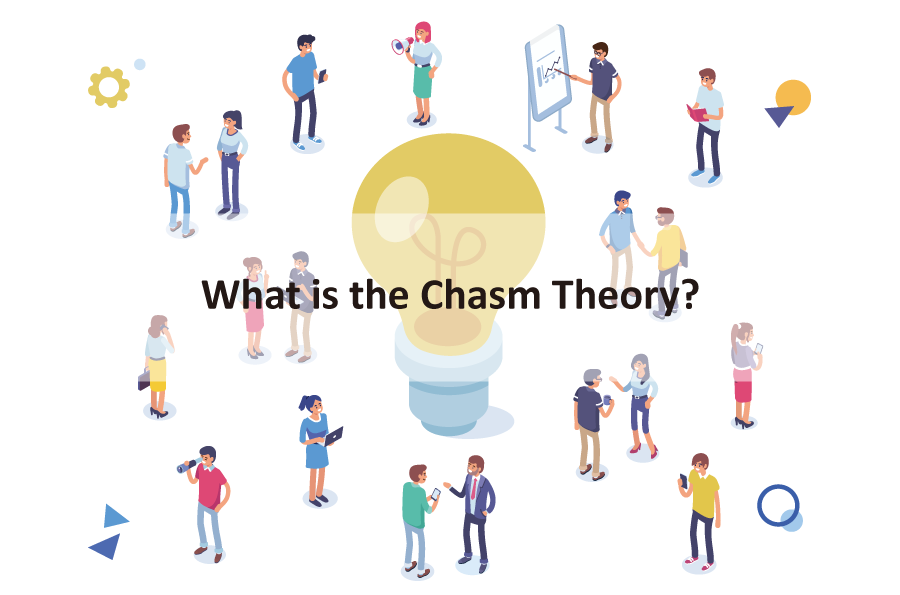Definition of Chasm Theory
▼Definition of Chasm Theory
The idea is that a deep divide impedes the transition from the initial market to the mainstream market, as seen in the market penetration of new products and technologies in the technology industry.
This keyword appears in marketing consultant Geoffrey A. Moore’s book Crossing the chasm (1991). The “chasm theory,” a marketing theory for the technology market, attracted great attention when it was first published.
Chasm Theory and Innovator Theory
To understand the chasm theory, we first need to know about the five consumer categories. This is based on the innovator theory of Everett M. Rogers, a well-known basic theory of diffusion studies, which considers that consumers can be divided into the following five categories.
*The figures in parentheses indicate the percentage of the market.
Five consumer categories
- Innovators (2.5%)
A group that is quick to purchase new products. They perceive value in newness and innovation in their purchasing behavior.
- Early adopters (13.5%)
A group that is sensitive to products that are likely to become popular in the future and will purchase those they judge to be good. They can transmit information and are highly influential. Also known as “influencers.
- Early Majority (34%)
A group that buys products that are already popular. Heavily influenced by early adopters, they purchase products relatively quickly for fear of missing out on trends.
- Late Majority (34%)
A demographic that is reluctant to purchase new products. They will consider purchasing a product only after confirming that half of the people around them have done so.
- Lagarde (16%)
The most conservative demographic. They are not interested in new products and are also unwilling to accept them.
This theory states that a new technology or trend spreads rapidly when it reaches the stage where it has reached the combined demographic of innovators and early adopters (a penetration rate of over 16%). This is the law of critical mass.
Therefore, it has been believed that appealing to innovators and early adopters is the key to the diffusion of new products.

What is the Valley of the Chasm?
In contrast, Moore argued that in technology products, which force users to change their behavior patterns, there is a crack between five categories of adopters. Among them, he said that there is a “deep and wide gulf” between early adopters and the early majority, which he called the “chasm.
Crossing the Valley of the Chasm
Early adopters in the high-tech market are buying products as “game changers,” aiming to differentiate their services by adopting new technologies before their competitors do. They are willing to take on the risk of adopting new technology to gain a competitive advantage, but they may also demand too much from the vendor.
On the other hand, the early majority (pragmatists) position products as a “mean to improve operational efficiency. They want to avoid having to go through trial and error themselves due to inexperienced technology, and they prefer to refer to examples of how other companies in the industry have used the product. However, they are also important customers for vendors because they can expect high-profit margins since they often designate their products and technologies as in-house standards.
In other words, according to the chasm theory, early adopters and early majority have different requirements, and it is important to change the marketing approach according to the diffusion stage of one’s product to move beyond the chasm and into the mainstream market.

IAD offers a telemarketing service that will listen carefully to BANTC information and five necessary items of information. Please feel free to contact us for more information.



コメント